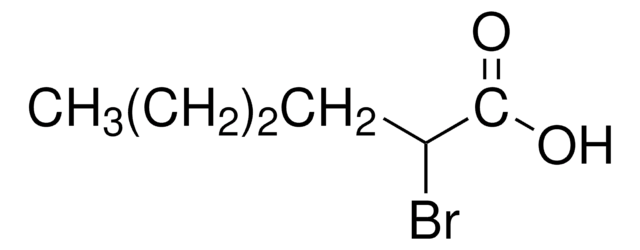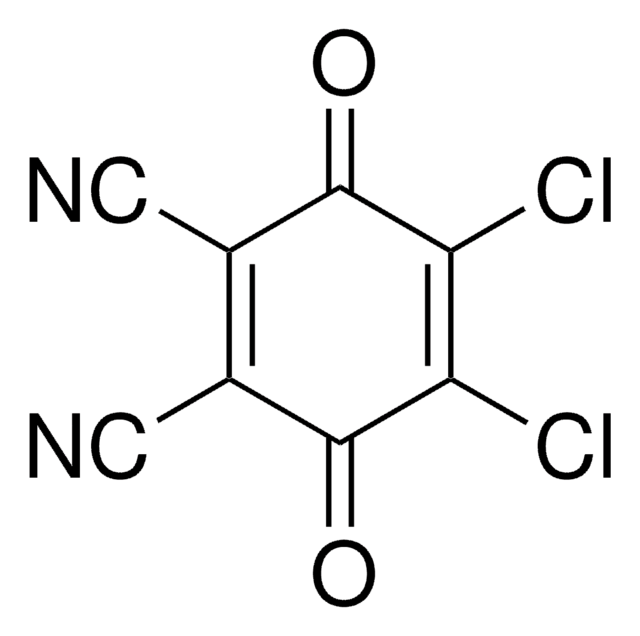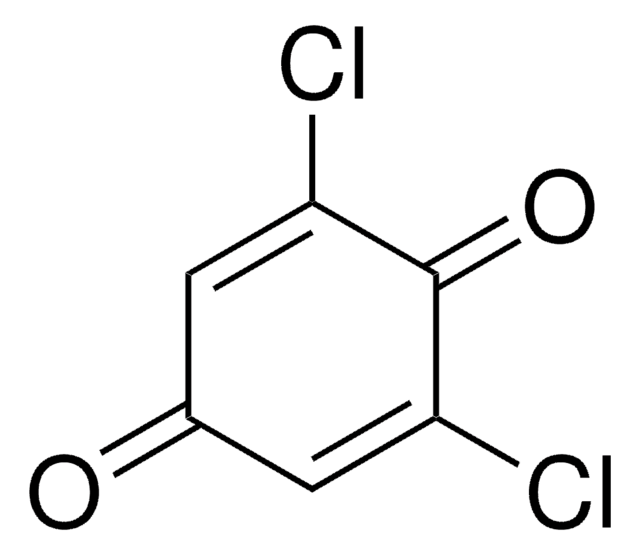280348
2-Bromooctanoic acid
97%
Synonym(s):
2-Bromocaprylic acid
Sign Into View Organizational & Contract Pricing
All Photos(1)
About This Item
Linear Formula:
CH3(CH2)5CH(Br)COOH
CAS Number:
Molecular Weight:
223.11
Beilstein:
1760958
EC Number:
MDL number:
UNSPSC Code:
12352100
PubChem Substance ID:
NACRES:
NA.22
Recommended Products
Quality Level
Assay
97%
contains
Silver Wool as stabilizer
refractive index
n20/D 1.471 (lit.)
bp
140 °C/5 mmHg (lit.)
density
1.278 g/mL at 25 °C (lit.)
functional group
bromo
carboxylic acid
SMILES string
CCCCCCC(Br)C(O)=O
InChI
1S/C8H15BrO2/c1-2-3-4-5-6-7(9)8(10)11/h7H,2-6H2,1H3,(H,10,11)
InChI key
GTGTXZRPJHDASG-UHFFFAOYSA-N
Looking for similar products? Visit Product Comparison Guide
General description
2-Bromooctanoic acid is an effective substitute for the expensive (2,000 times) and cell-growth-inhibiting polyhydroxyalkanoic acid synthesis inhibitor, cerulenin. It blocks the formation of polyhydroxyalkanoic acid in Pseudomonas fluorescens BM07 without any influence on the cell growth when grown on fructose. It inhibits β-oxidation of fatty acids in perfused rat liver and in mitochondria isolated from rat liver.
Signal Word
Danger
Hazard Statements
Precautionary Statements
Hazard Classifications
Skin Corr. 1B
Storage Class Code
8A - Combustible corrosive hazardous materials
WGK
WGK 3
Flash Point(F)
Not applicable
Flash Point(C)
Not applicable
Personal Protective Equipment
dust mask type N95 (US), Eyeshields, Gloves
Choose from one of the most recent versions:
Already Own This Product?
Find documentation for the products that you have recently purchased in the Document Library.
Channeling of intermediates derived from medium-chain fatty acids and de novo-synthesized fatty acids to polyhydroxyalkanoic acid by 2-bromooctanoic acid in Pseudomonas fluorescens BM07.
LEE H-J, et al.
Journal of microbiology and biotechnology, 14(6), 1256-1266 (2004)
B M Raaka et al.
The Journal of biological chemistry, 254(14), 6755-6762 (1979-07-25)
Incubation of rat liver mitochondria with 10 microM DL-2-bromooctanoate causes complete and irreversible inactivation of 3-ketothiolase I (acyl-CoA:acetyl-CoA C-acyltransferase). Evidence is presented that mitochondria convert bromooctanoate to 2-bromo-3-ketooctanoyl-CoA, an alpha-haloketone which is probably the active form of the inhibitor. The
W E Roediger et al.
British journal of experimental pathology, 67(6), 773-782 (1986-12-01)
There is some evidence that failure of fatty acid or beta-oxidation in the epithelium of the colonic mucosa is associated with the development of ulcerative colitis. We tested the hypothesis that inhibition of fatty acid oxidation in the colonic mucosa
N Mayorek et al.
The Journal of biological chemistry, 260(11), 6528-6532 (1985-06-10)
Triacylglycerol synthesis in cultured rat hepatocytes was inhibited by 2-bromooctanoate with a concomitant accumulation of diacylglycerols. 2-Bromooctanoate inhibition could be ascribed to its thioesterification by medium chain fatty acyl-CoA synthase (Raaka, B.M., and Lowenstein, J.M. (1979) J. Biol. Chem. 254
N Mayorek et al.
European journal of biochemistry, 182(2), 395-400 (1989-06-15)
The limiting role of diacylglycerol acyltransferase with respect to triacylglycerol synthesis in cultured rat hepatocytes was evaluated by following the inhibition of the overall synthetic flux by 2-bromooctanoate acting as an inhibitor of the diacylglycerol acyltransferase step. The flux-control coefficient
Chromatograms
suitable for GCOur team of scientists has experience in all areas of research including Life Science, Material Science, Chemical Synthesis, Chromatography, Analytical and many others.
Contact Technical Service







